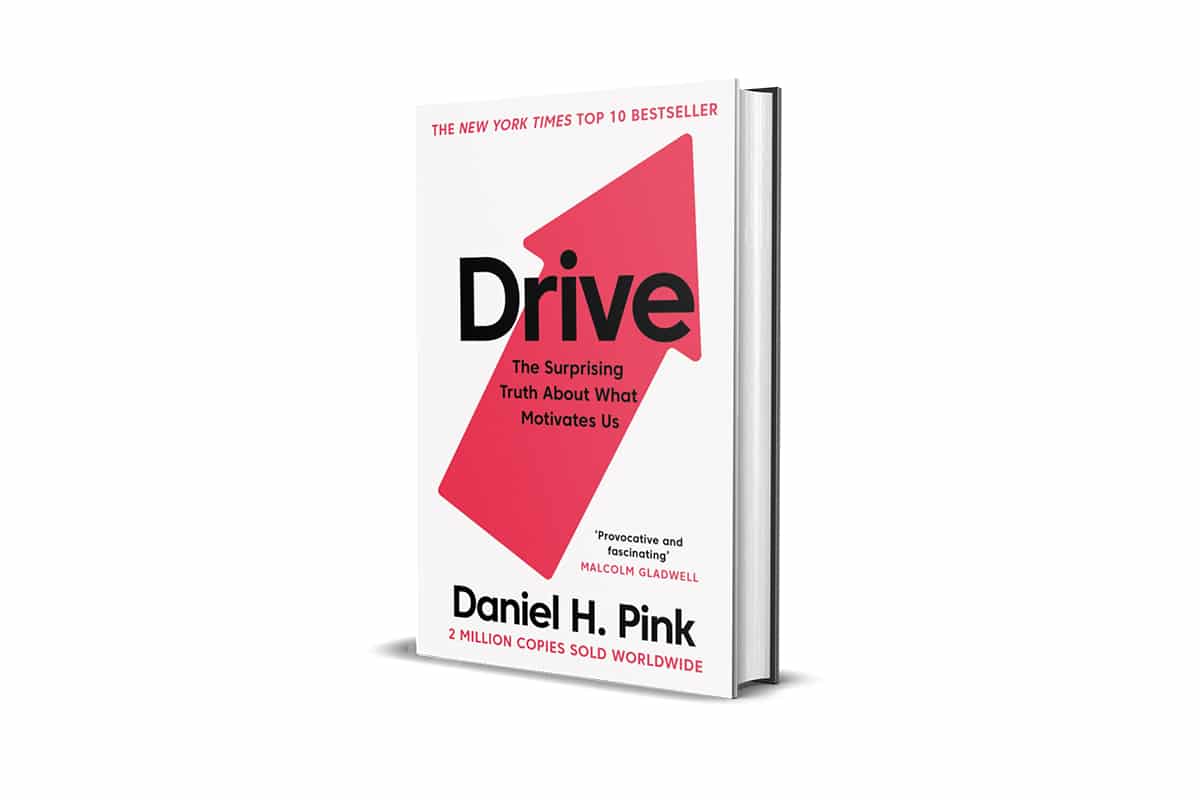Genre: Management
By
Paperback | 242 pp. | Penguin | 05/04/2011 | 2nd Edition
Buy on Amazon
Drive, the surprising truth of what motivates us by Daniel Pink, is a book published already 10 years ago, but that still scores high on Amazon’s bestsellers. It was suggested to me by a colleague, and thus my recent reading.
The book key idea focuses on the gap existing between how Motivation is treated in the workplace and the results of social science research that shows that instead, most assumptions are seriously flawed. Much of what we (assume) we know around motivation as managers, is therefore wrong.
Part of this is because we assume all tasks at work are the same. There’s instead a difference, the author states, between the way we approach these. Tasks are either: (1) Algorithmic—you pretty much do the same thing over and over in a certain way, or (2) Heuristic—you have to come up with something new every time because there are no set instructions to follow. Understanding the nature of the task is the first step to understanding what motivates us.
The best use of money as a motivator is to pay people enough to take the issue of money off the table: Pay people enough so that they’re not thinking about money and they’re thinking about the work. Once you do that, it turns out there are three factors that the science shows lead to better performance, not to mention personal satisfaction: autonomy, mastery, and purpose.
Daniel Pink, Drive
Researchers have found that extrinsic rewards can be effective for algorithmic tasks—those that depend on following an existing formula to its logical conclusion. But for more right-brain undertakings—those that demand flexible problem-solving, inventiveness, or conceptual understanding—contingent rewards can be dangerous. And in a world where most of the first type tasks get automated, the second area becomes more prominent in most of today’s jobs.

The author illustrates also that research also that the secret to high performance isn’t our biological drive or our reward-and-punishment drive, but our third drive—our deep-seated desire to direct our own lives, to extend and expand our abilities, and to live a life of purpose.
This undermines the traditional managerial “carrot and sticks” approach, and Pink identifies 7 deadly flaws in this approach.
- They can extinguish intrinsic motivation
- They can diminish performance
- They can crush creativity
- They can crowd out good behaviour
- They can encourage cheating, shortcuts, and unethical behaviour.
- They can become addictive
- They can foster short-term thinking
According to the author, if you take the issue of money off of the table, the things that truly motivate people are:
Autonomy, which is the desire to direct our own lives. Best way to achieve this is by giving people autonomy over the four T’s: their task, their time, their technique and their team.
Mastery, the urge to get better and better at something that matters. Yet most modern workplaces seems to be built on the lack of engagement and the disregard for mastery.
Purpose, the yearning to do what we do in the service of something larger than ourselves. Luckily some businesses have begun to rethink purpose in how they operate, but way too often the link between the company’s purpose and the individual one is still left to chance.
Human beings have an innate inner drive to be autonomous, self-determined, and connected to one another. And when that drive is liberated, people achieve more and live richer lives.
Daniel Pink, Drive
Here below also a beautiful animation that summarizes the key ideas of the book.
Drive by Daniel Pink, Conclusion
The topics treated in Drive by Daniel Pink are critical. As we plan our organisations, we need to consider intentional design of motivation. The relevance of Purpose is more and more clear, also after Sinek’s work.
A lot of the ideas put on the table seem almost “natural”, however, we see how difficult it is to move away from the main ways we try to incentivize people at work, practices that are buried ion assumptions that prove constantly wrong. I truly believe that it is HR’s most important task to retain a new understanding of motivators at work. Compensation needs, wherever possible, be taken out of the equation as the sole way to achieve this, and instead focus on the way we redefine jobs, roles, responsibilities, and create environments where people can really thrive.

Genre: Management | Rating: 5/5
Paperback | 242 pp. | Penguin | 05/04/2011 | 2nd Edition
ISBN: 9781594488849
Buy on Amazon

[…] concept is very well linked to the recent comment done on the book Drive by Daniel Pink. Traditional “Carrot and Stick” mentality does not work. What caught my attention is […]
[…] we see motivation and purpose under a different eye, we can interpret the need of management in a totally different […]
[…] this, the author creates a strong link with concepts of Motivation that we have already seen for example in Pink’s work, as well as with principled of Curiosity and Learning Agility that I have also already written […]
[…] A great video by RSA that summarizes the concept of the book by Daniel Pink “Drive”. […]
[…] this, the author creates a strong link with concepts of Motivation that we have already seen for example in Pink’s work, as well as with principled of Curiosity and Learning Agility that I have also already written […]